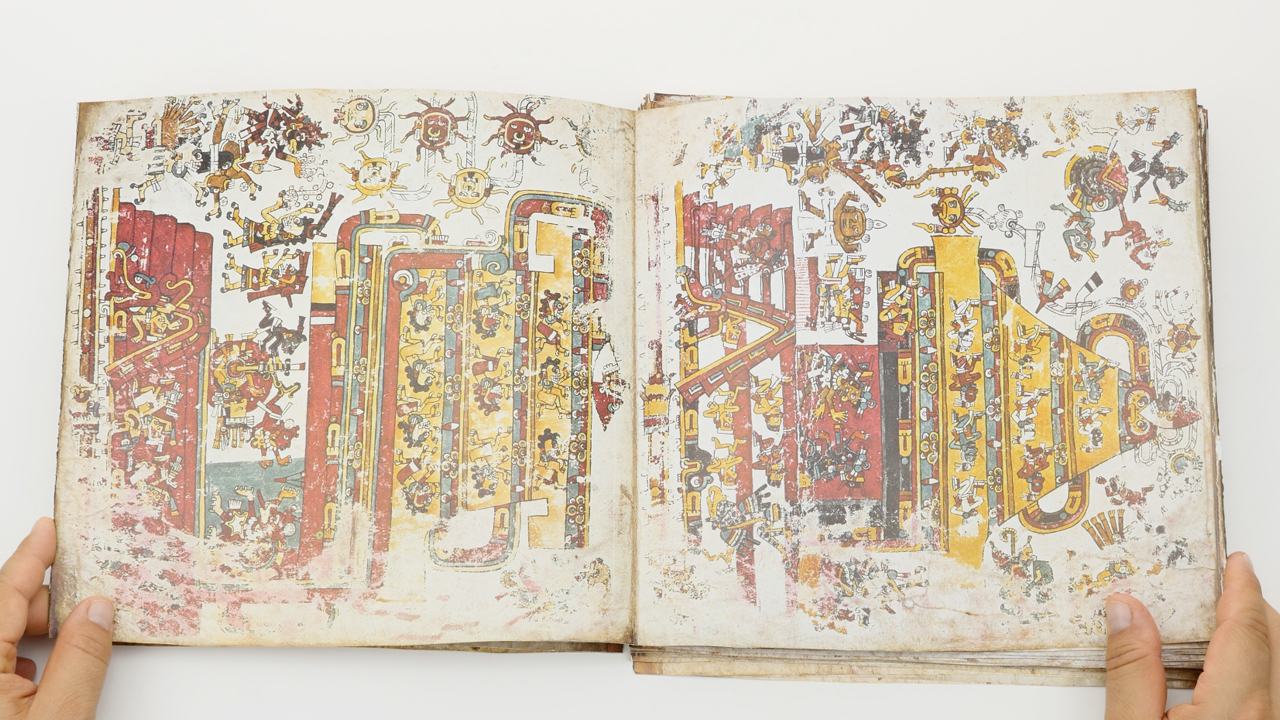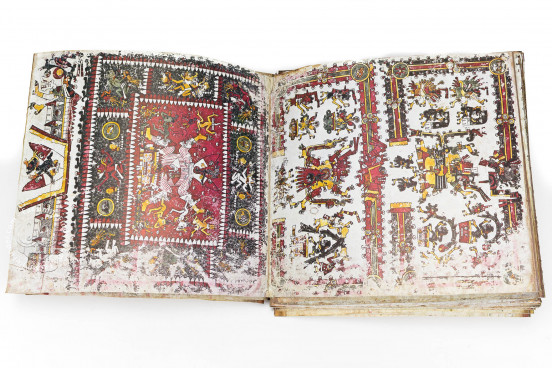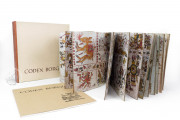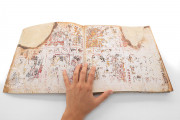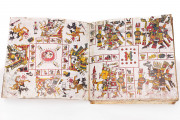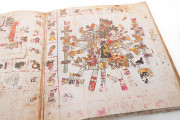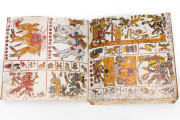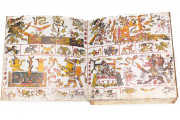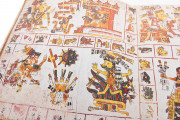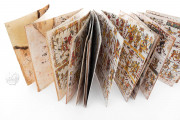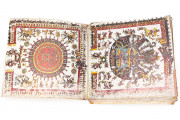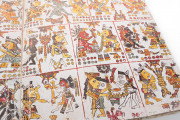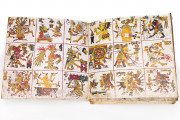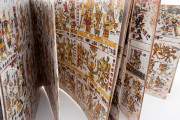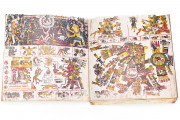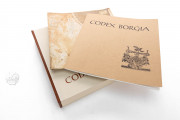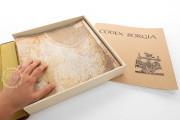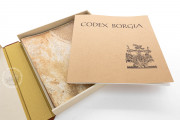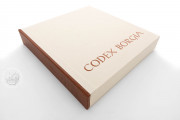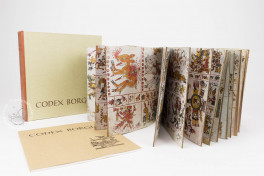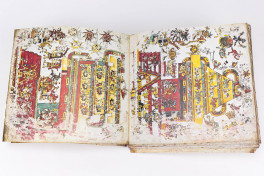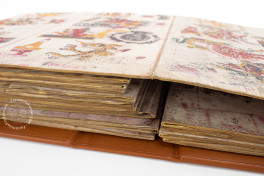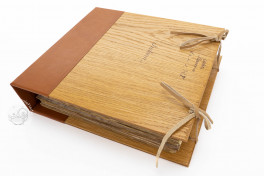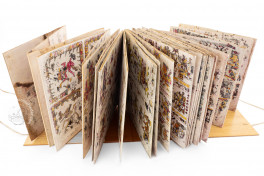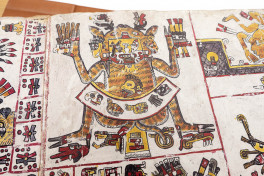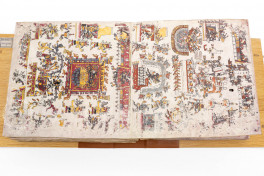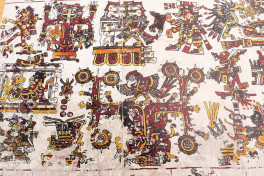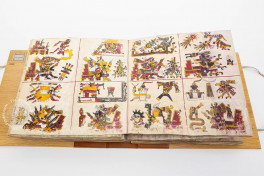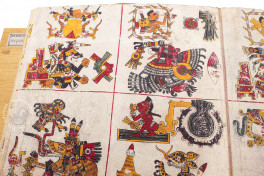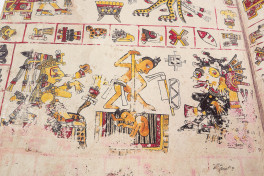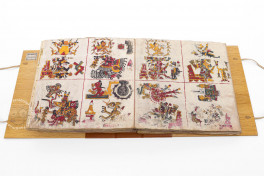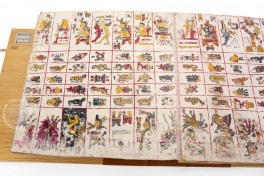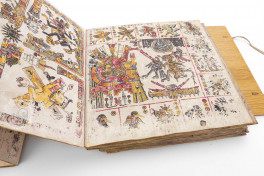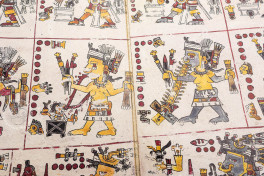The Codex Borgia is a Mesoamerican sacred book compiled in the Puebla-Tlaxcala region in Mexico's central highlands. It is well known for its high aesthetic quality. It is an almanac of seasonal cycles filled with representations of deities, religious rituals and events, and glyphs. It was probably made between 1450 and 1500. It is a screenfold composed of nearly square-shaped panels composed of fourteen pieces of deerskin painted on both sides and folded accordion style. When opened fully, it extends to approximately eleven meters. Seventy-six of its seventy-eight panels are covered with pictographs. Its wooden covers are now lost.
The Codex Borgia is the namesake of the Borgia Group, five sacred manuals or books of the gods closely related both stylistically and in their contents. The group also includes the Codex Cospi, the Codex Vaticanus B, the Codex Fejérváry-Mayer, and the Codex Laud.
The work of a Master Painter-Scribe
The painter-scribe of the Codex Borgia was incontestably a master of his medium. The manuscript features pictographs with firm black outlines in a palette dominated by ocher and red and enhanced by more sparing use of blue. Most of the figures stand out boldly from the white plaster-coated background, but there are also complex compositions with painted red or patterned backgrounds. The style of the painter-scribe of the Codex Borgia is related to that found in altar paintings and wall paintings discovered in the Puebla-Tlaxcala region, providing our best evidence for the screenfold's origin.
A Comprehensive Program of Illustration
The content of the Codex Borgia is the most comprehensive of all the screenfolds of the Borgia Group. The information is presented predominantly from right to left, with content presented in horizontal registers intended to be read in boustrophedon (zig-zag) from bottom to top within a single panel or over the length of as many as six adjacent panels. The largest section (pp. 29-46) traces a narrative of creation from the first explosion of energy to the creation of the first humans.
Flanking the central content are prognostication almanacs based on the 260-day calendar and instructions for rituals, some associated with climate patterns, traveling, childbirth, and marriage. Pictographs of owls, serpents, deer, alligators, birds, vessels, and deities convey the screenfold's complicated content. Among the deities depicted are those associated with days, childbirth, the dead, Venus, and the sun.
From Puebla-Tlaxcala to the Vatican
The first known owner of the Codex Borgia is Cardinal Stefano Borgia (1731-1804), who included it among his collection of antiquities. After Borgia's death, the manuscript came under the control of the Propaganda Fide, the congregation of the Vatican responsible for missionary jurisdictions. In 1902, the manuscript was transferred to the Vatican Library.
We have 3 facsimiles of the manuscript "Codex Borgia":
- Códice Borgia facsimile edition published by Egeria, S.L.
- Codex Borgia facsimile edition published by Akademische Druck- u. Verlagsanstalt (ADEVA), 1976
- Códice Borgia facsimile edition published by Testimonio Compañía Editorial, 2008

